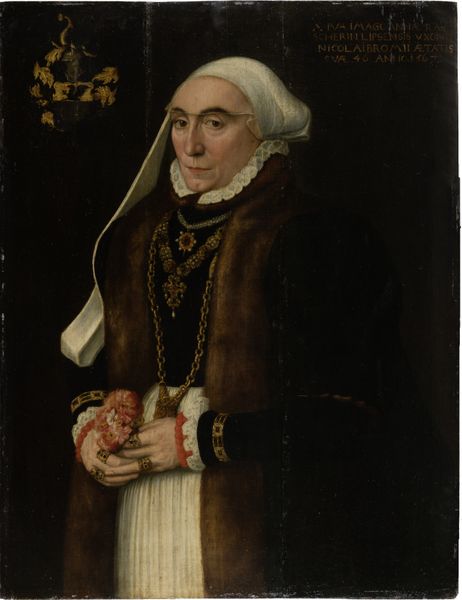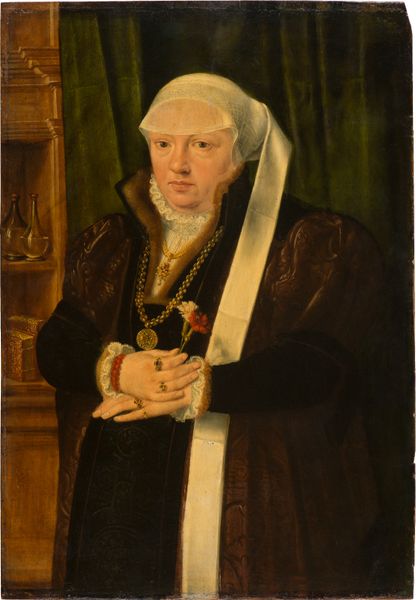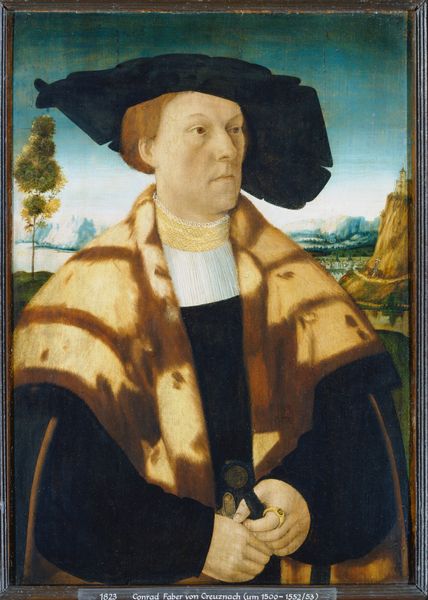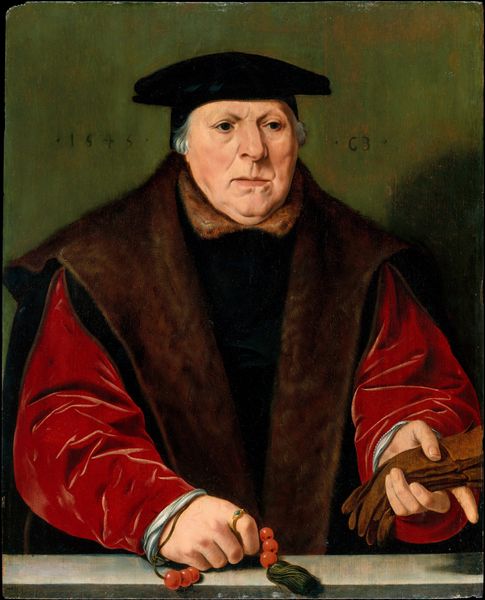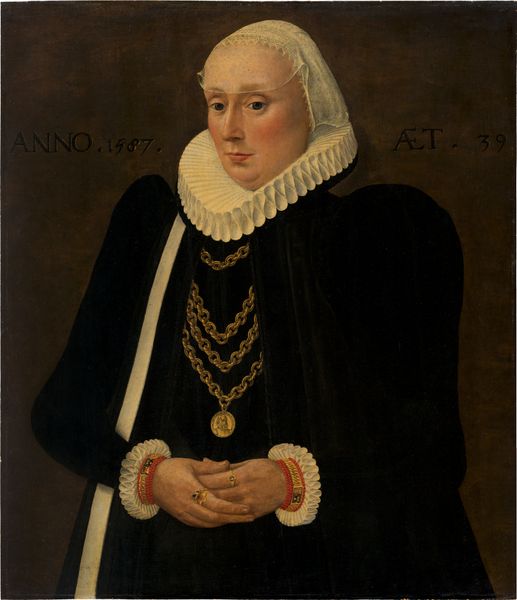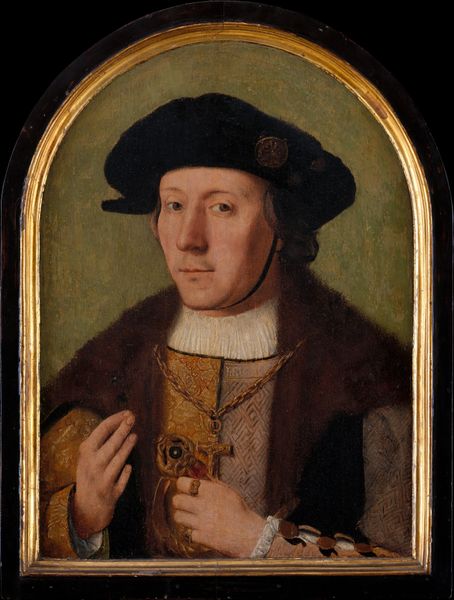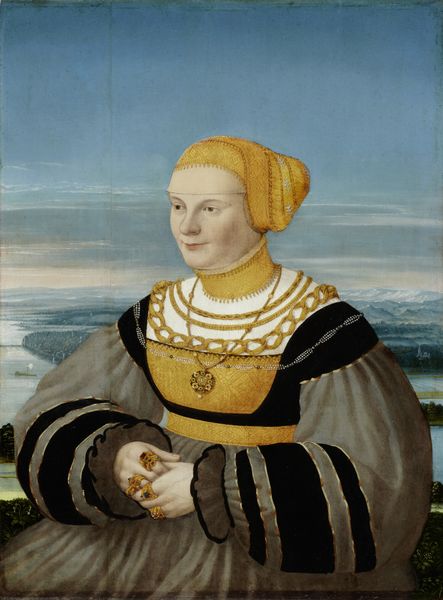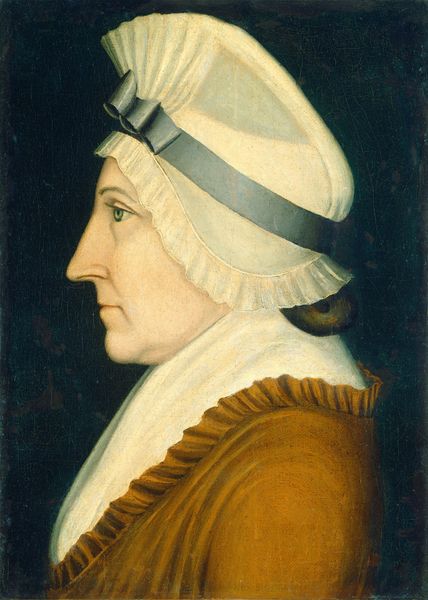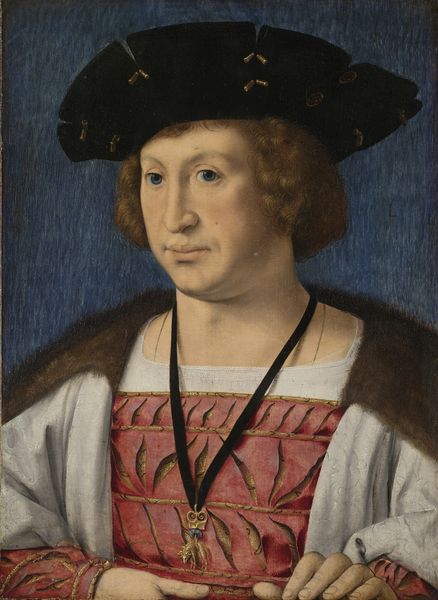
Portrait of a Lady from the Stralenberg Family (_) c. 1545
0:00
0:00
oil-paint
#
portrait
#
oil-paint
#
11_renaissance
#
oil painting
#
northern-renaissance
Dimensions: 55.5 x 37.8 x min. 0.3 cm
Copyright: Public Domain
Curator: Painted around 1545, this is "Portrait of a Lady from the Stralenberg Family" by Conrad Faber von Kreuznach. Executed in oil paint, it is a striking example of Northern Renaissance portraiture. Editor: Whoa, she is decked out! The rings! The gold! There's some serious wealth on display. But she doesn't look overjoyed. Actually, she appears rather...stiff, maybe a bit mournful? Curator: Exactly. Portraits of this era were carefully constructed displays of status and morality. Her attire isn’t just fashionable; it’s indicative of her social standing and family connections within the powerful Stralenberg family. Editor: True. It’s like a sixteenth-century LinkedIn profile. But even knowing that, there's something... human about the gaze. Despite the formal pose, I feel a connection. The backdrop, that wistful river landscape, feels connected to her mood. Curator: Yes, Faber does masterfully weave together the personal and the political. Her gaze is both reserved and engaging. That subtle psychological complexity, combined with Faber's sharp eye for detail—the textures of the fur, the intricate gold work—elevates it beyond a mere status symbol. These wealthy families wanted immortality. And for us to be discussing it, well…they kind of achieved it, right? Editor: For sure. There's a real weight to her jewelry, almost looks cumbersome. Maybe being rich in the 16th century came with its own set of burdens? That being said, I wouldn't mind trying those burdens out myself. Curator: The weight is symbolic, as well as material. She is carrying her family's legacy on her shoulders, so to speak. The context is crucial; these paintings legitimized dynasties and affirmed power structures. This is public relations, Renaissance style! Editor: I suppose looking at it now, you start to see the power dynamics involved and not just how swanky the model looks at first sight. All that intense symbolism might also contribute to her dour look, all the pressure and expectation that goes into the sitting for such an important display. Curator: Agreed. I think that is more nuanced a reading of her affect than only looking into aesthetic interpretations, that ultimately miss the artwork’s point of being. Thanks for shedding a new light on this important historical object. Editor: Always happy to offer my highly subjective opinion, but yes, thanks for adding depth to it by adding sociohistorical context, otherwise it just a shiny lady from another time.
Comments
No comments
Be the first to comment and join the conversation on the ultimate creative platform.
